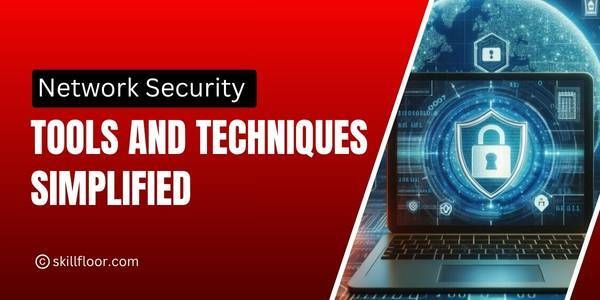Types of Site Maps in SEO Explained
Explore different types of site maps in SEO, including XML and HTML, and understand their importance in enhancing search engine visibility and user experience.

Hey, you! If you've ever questioned the many kinds of SEO sitemaps and why they're important, you've come to the correct spot. This lesson will explain everything you need to know about sitemaps, their different varieties, and how they can help your SEO efforts.
What is a Sitemap?
A sitemap is like a roadmap for your website, helping search engines find, crawl, and index all your pages. It tells search engines which pages are important and provides info about each page. There are two main types: HTML sitemaps for users, making your site easier to navigate, and XML sitemaps for search engines, ensuring they index your important pages.
HTML sitemaps
HTML sitemaps are mainly meant for users. They provide a clickable and ordered structure for your website, making it easier for visitors to travel. HTML sitemaps provide a clear, hierarchical arrangement of your website's pages, allowing search engines better to grasp the structure and importance of your material.
XML Sitemaps
XML Sitemaps are generated for search engines. They include meta tags about each URL, such as when the page was last updated, how frequently it changes, and how it compares to other URLs on the site. XML sitemaps are essential for SEO since they make sure search engines like Google and Bing can find and index all of your relevant pages, even if your internal linking structure isn't flawless.
Why You Need Both
Using both HTML and XML sitemaps is suggested because they provide various functions. HTML sitemaps increase user experience, whereas XML sitemaps help search engines index websites more effectively. By having both, you can ensure that your website is user-friendly and fully indexed by search engines.
Types of Site Maps in SEO Explained
Understanding the different types of sitemaps and their benefits can greatly improve your SEO approach
-
HTML sitemaps
HTML sitemaps are user-friendly, hierarchical lists of your website's pages. They function as a table of contents, allowing users to conveniently explore your site. Sitemaps also help search engines understand your website's structure and hierarchy.
Benefits of HTML Sitemaps:
-
Improve the User Experience: Make it easier for visitors to find information.
-
Help Search Engines: Make it easier for search engines to understand the layout and importance of each page on your website.
-
Boost SEO: By providing more navigation paths, linked pages can increase their SEO rankings.
-
XML Sitemaps
XML sitemaps are designed particularly for search engines. They display a list of your site's URLs together with metadata such as the last update date, change frequency, and page priority. This information allows search engines to crawl and index your website efficiently.
Benefits of XML Sitemaps:
-
Complete Indexing: Ensure that all important pages are discovered and indexed by search engines.
-
Structure and Updates: Help search engines understand your site's structure and keep track of changes.
-
Rich Media and Frequent Updates: Required for sites with a large amount of rich media or that are frequently updated to ensure that search engines keep up with changes.
Using both HTML and XML sitemaps improves user navigation and ensures that search engines can properly index your material, hence improving your overall SEO performance.

Specialized Types of Sitemaps
Apart from the basic HTML and XML sitemaps, there are other customized sitemaps for various uses.
1. Image Sitemaps
Image sitemaps give information about the images on your website, allowing them to be indexed in Google Image Search. This is especially handy for e-commerce sites, photographers, and other websites that rely heavily on photos.
Benefits of Image Sitemaps:
-
Improves image visibility in search results.
-
Allow search engines to grasp the content of your photographs.
2. Video Sitemaps
assist search engines index your website's videos. They provide details such as video runtime, category, and description. If your site contains a lot of video content, a video sitemap can help it rank higher in search results.
Benefits of Video Sitemaps:
-
Improves videos are indexed and searchable.
-
Provide specific information about your movies to search engines.
3. News Sitemaps
are created for news websites to ensure that the most recent news stories are indexed promptly. They provide metadata such as publication date and article title.
Benefits of News Sitemaps:
-
Allow search engines to quickly find and index news content.
-
News websites need to appear in Google News.
Do You Need A Sitemap?
yes. While Google and other search engines can identify your sites without a sitemap, having one is strongly advised, especially if
-
Your website is large (around 500 pages).
-
Your website has a lot of rich media or is regularly updated.
-
Your website is new, with little backlinks.
-
Your internal connection structure is complicated or not well-developed.
How to Create Sitemaps
Creating a sitemap may appear too much, but it is more simple with the correct tools.
Tools for creating XML Sitemaps
Tools for Creating XML Sitemaps
-
Yoast SEO: This WordPress plugin builds XML sitemaps and refreshes them as you submit new material.
-
Google XML Sitemaps: is another popular WordPress plugin for generating XML sitemaps.
-
Screaming Frog SEO: A spider is a robust tool that can build XML sitemaps and has advanced SEO analysis capabilities.
Tools for Creating HTML Sitemaps
-
Slickplan: A visual sitemap tool that helps you create both HTML and XML sitemaps.
-
Dynomapper: Offers a comprehensive suite of tools for creating sitemaps, including HTML sitemaps.
Submitting Your Sitemap
Once you’ve created your sitemap, the next step is to submit it to search engines. For Google, this can be done through Google Search Console. Simply log in, go to the Sitemaps section, and enter the URL of your sitemap.
Best Practices for Sitemaps
To get the most out of your sitemaps, follow these best practices:
-
Keep it updated: Make sure your sitemap reflects the current structure and content of your site.
-
Use canonical URLs: Only include canonical URLs in your sitemap to avoid duplicate content issues.
-
Limit the size: An XML sitemap can contain up to 50,000 URLs and be up to 50MB. If your site exceeds these limits, use multiple sitemaps and a sitemap index file.
-
Include all important pages: Ensure that all critical pages, including those with rich media, are included in your sitemap.
The Role of Sitemaps in Broader SEO Strategies
Sitemaps are an essential part of a well-rounded SEO strategy. They assist search engines in efficiently crawling and indexing your site, working in concert with other digital marketing strategies to increase your online presence.
Social Media Marketing and Sitemaps
Sharing links to your sitemap on social media can help increase your site's visibility and traffic. Integrating your sitemap with a solid social media marketing plan increases your site's discoverability for both people and search engines.
PPC Campaigns and Sitemaps
Effective PPC ads drive targeted visitors to your website. Including your landing pages in your sitemap guarantees that search engines may index them, enhancing their quality score and potentially lowering your CPC. This implies your advertising will perform better while costing less.
Email Marketing & Sitemaps
Incorporating links to important pages from your sitemap into email marketing campaigns helps guide subscribers to important parts of your website. This improves the user experience and indicates to search engines the relevance of these pages, assisting with indexing and ranking.
There you have it—Types of Site Maps in SEO Explained! Understanding and using the appropriate sorts of sitemaps can greatly improve your site's SEO performance. Whether it's an HTML sitemap for easier user navigation or an XML sitemap for full indexing by search engines, each form is important in your digital strategy. Don't forget to combine your sitemaps with other marketing activities such as social media marketing, PPC advertising, and email marketing to enhance your internet visibility.






























































